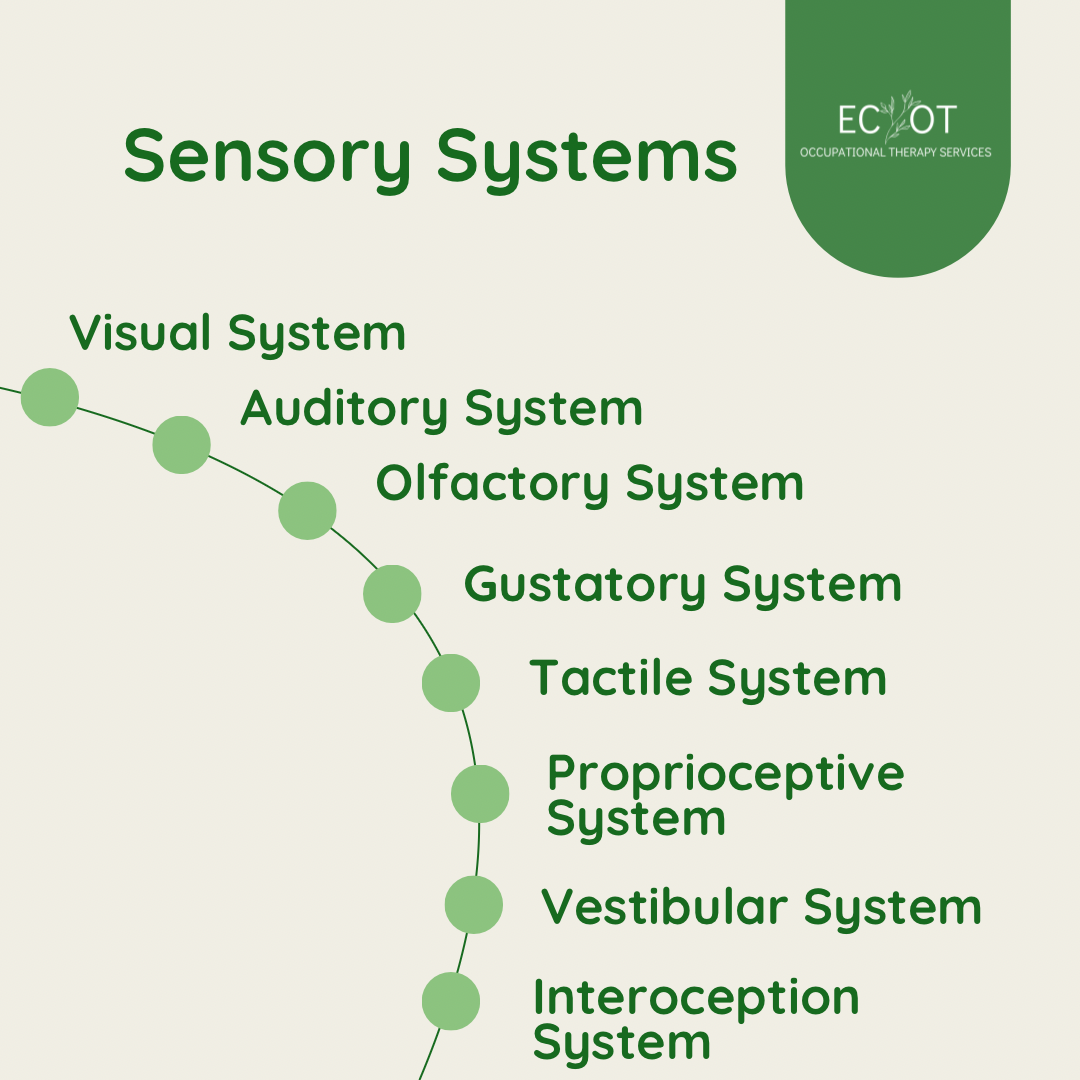Gustatory System
Continuing our journey to discuss all the sensory systems, we have the gustatory system – our sense of taste. This system relies on receptors in our tongue to help us interpret and respond to different tastes. This system is also closely linked to children who seek additional oral input in general and picky eaters.
Signs Your Child May Have Gustatory Processing Needs
Children can respond to smells in a variety of ways. Here are some behaviors you might notice:
Sensitivity to gustatory input (over-responsive):
Gags when eating different foods
Described as a very picky eater, reporting foods are too spicy, too sour or too bitter
Typical flavours, such as toothpaste, are bothersome
Seeking more gustatory input (under-responsive/seeking):
Seeks out strongly flavoured foods, for example sour candy or hot peppers
Adds additional flavours, spices or seasonings to food as they taste “bland” to them
Low registration of gustatory input:
Doesn’t seem to notice the taste of different food items. Items that would typically have a strong flavour, they don’t seem to notice
May report “all food tastes the same”
Avoidance of gustatory input:
May refuse to eat large quantities of specific foods during mealtime, but may not remove themselves entirely
It’s important to remember: every child is different. Sensory needs show up in unique ways. Sometimes children naturally find ways to meet their needs, and that’s perfectly okay. Concerns usually arise when a child’s sensory needs interfere with their ability to comfortably participate in everyday life.
Supporting Gustatory Needs at Home
If you suspect your child may have challenges with tastes, here are some practical strategies to try:
For children who are over-responsive (sensitive):
Try to slowly introduce more flavours throughout their food by adding them to the table during mealtime
Never force the child to eat different flavours that may be distressing, instead provide the opportunity to touch, lick, kiss and spit back out different flavours
Provide discussion around what flavours you are tasting and how they make your body feel
Ensure mealtime feels safe for your child, provide a calming area for them to eat
For children who are under-responsive or seeking:
Incorporate strong flavours throughout meals. For example, spicy foods, bitter vegetables, sour fruit etc. to meet their needs
Provide additional strong flavours into daily routine, for example strong mint toothpaste, or cinnamon gum
Supporting your child’s sensory needs can make a huge difference in their comfort, confidence, and participation in daily activities. If you’re noticing that your child’s response to taste is more intense, less noticeable, or interfering with daily life, it may be time to reach out for support.
At EC Occupational Therapy, we’re here to help you better understand your child’s unique sensory profile and find strategies that work best for your family.

